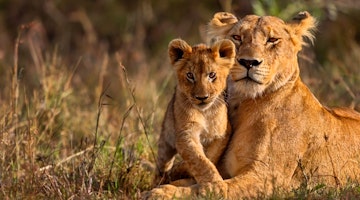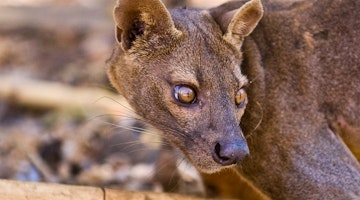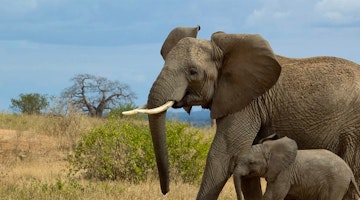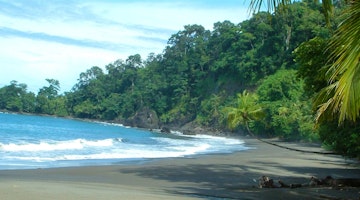Kilimanjaro is the highest mountain on the African continent and the world’s tallest free standing massif.
It is the fourth highest of the world’s famous ‘Seven Summits’ and its snow-capped image is exceptionally beautiful.
Kilimanjaro is a national park covering an area of 3885 square kiliometres and it acquired World Heritage Site status in 1989. The mountain is composed of three extinct volcanoes: Kibo at 5,895 metres (19,340feet), Mawenzi at 5,149 metres (16,896 feet) and Shira at 3,962 metres (13,000 feet). It truly is an awe-inspiring place.
Scaling the mountain can be a daunting prospect, but no technical climbing skills are needed, so most people can succeed. It is far from easy and should not be undertaken lightly; but with good guiding, correct preparation, a suitable choice of route and staying aware of your body’s needs, there is no reason why you should not make it to the top.
Rainbow Tours offers guided groups and private climbs on a selection of the best of Kilimanjaro's routes during your time in Tanzania.
When to climb Kilimanjaro
Kilimanjaro can be climbed all year round but some months are inevitably better than others, so the climb season runs from mid-December to the end of February and from mid-June to the end of October. Climbing at other times can be pretty tough in terms of weather and logistics.
We pride ourselves on offering routes away from the main, overcrowded climbs, focussing on routes that give you the full wilderness experience that a Kilimanjaro climb should offer.
Climbing Mt Meru
We also arrange climbs on Mt Meru, which - though dwarfed by its imposing neighbour 50kms to the east - is one of Africa’s most elegant peaks.
It can also be used as a good acclimatisation climb before ascending Kilimanjaro. With Kilimanjaro firmly in the limelight, Mt Meru is largely forgotten and offers the opportunity to climb in an almost pristine mountain environment.
Craig Kaufman
Travel Specialist
Looking for inspiration?
You'll find expert travel guides, holiday ideas and insider tips now on the Rainbow blog

Top 5 First Time Safari Destinations

Salar De Uyuni - The World's Largest Salt Flat


10 Strange Animals and Where to Go to See them


Top five South Africa Safari lodges

Sustainable Tourism In Corcovado National Park, Costa Rica

Why Choose Us?
Passionate travel experts
- We've been leading wildlife travel since our first South Africa tours over 25 years ago
- Our Travel Specialists have lived in their specialist area for years
- We work with local guides to immerse you deeper in our diverse range of experiences
Personal & tailor-made
- You'll speak to your own expert who'll share their first-hand knowledge
- We'll make your itinerary seamless with 24/7 emergency contact available
- Your Travel Specialist will listen to ensure you have the best chance of seeing the wildlife you love
Responsible by nature
- We take care to actively contribute to the conservation of environments we visit
- For select countries, we make a charitable donation on your behalf when you make your booking
- We've partnered with conservation experts and NGOs to curate responsible tours
For the latest travel advice from the Foreign, Commonwealth and Development Office check www.gov.uk/travelaware








